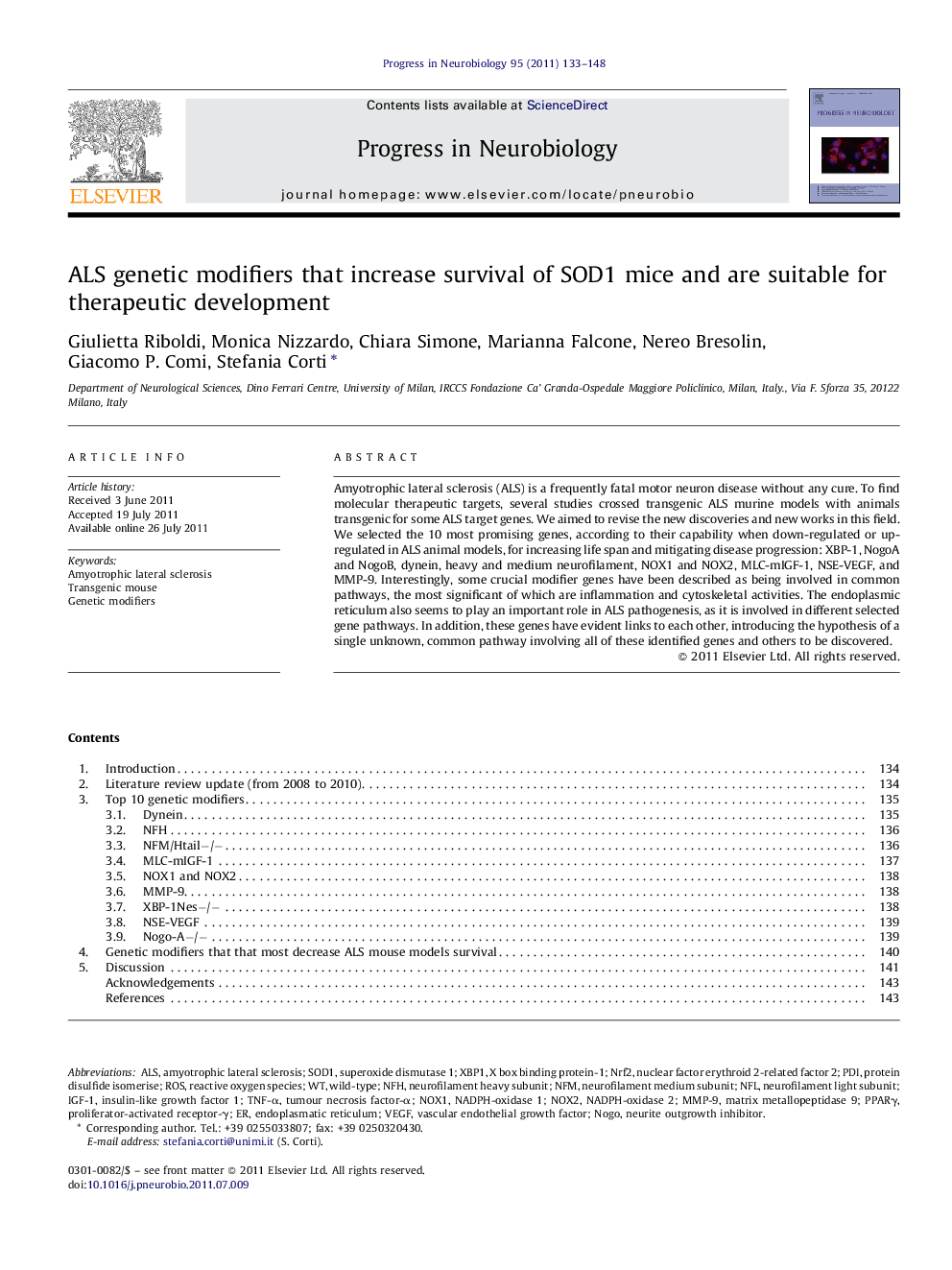| Article ID | Journal | Published Year | Pages | File Type |
|---|---|---|---|---|
| 4353532 | Progress in Neurobiology | 2011 | 16 Pages |
Amyotrophic lateral sclerosis (ALS) is a frequently fatal motor neuron disease without any cure. To find molecular therapeutic targets, several studies crossed transgenic ALS murine models with animals transgenic for some ALS target genes. We aimed to revise the new discoveries and new works in this field. We selected the 10 most promising genes, according to their capability when down-regulated or up-regulated in ALS animal models, for increasing life span and mitigating disease progression: XBP-1, NogoA and NogoB, dynein, heavy and medium neurofilament, NOX1 and NOX2, MLC-mIGF-1, NSE-VEGF, and MMP-9. Interestingly, some crucial modifier genes have been described as being involved in common pathways, the most significant of which are inflammation and cytoskeletal activities. The endoplasmic reticulum also seems to play an important role in ALS pathogenesis, as it is involved in different selected gene pathways. In addition, these genes have evident links to each other, introducing the hypothesis of a single unknown, common pathway involving all of these identified genes and others to be discovered.
► Amyotrophic lateral sclerosis (ALS) is one of the most important neurodegenerative diseases. ► Many studies used ALS transgenic animal models to discover possible therapies. ► We review the literature about genetic modifiers in crossed animal models. ► We selected the 10 most promising genes for increasing life span of ALS models. ► The selected genes are: XBP-1, NogoA/B, dynein, NFH, NFM, NOX1/2, MLC-mIGF-1, NSE-VEGF, and MMP9.
